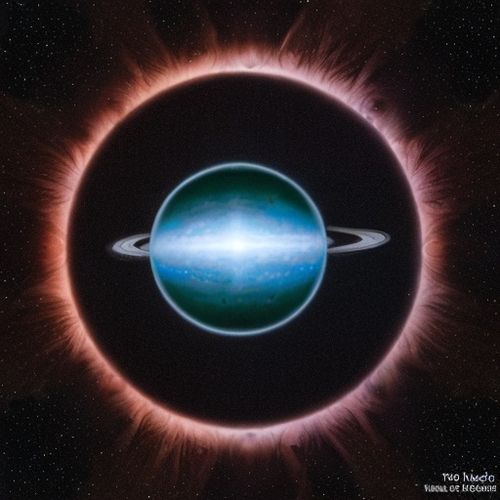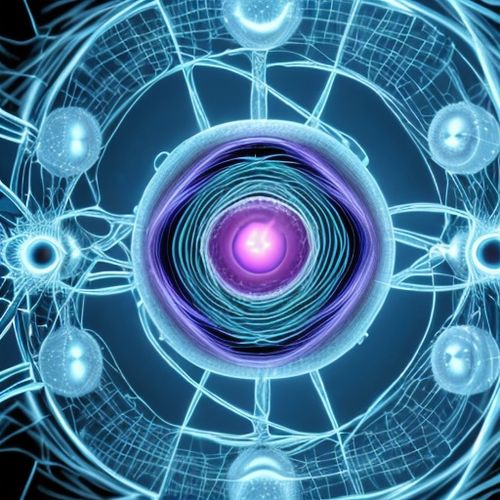Quantum mechanics is a fundamental theory in physics that describes the physical properties of nature at the scale of atoms and subatomic particles. It is a branch of physics that has revolutionized our understanding of the microscopic world, revealing a realm where the classical laws of physics no longer apply.
The development of quantum mechanics has led to significant advancements in technology, medicine, and our overall understanding of the universe. In this article, we will delve into the birth of quantum mechanics, its key principles, applications, and the ongoing debates and interpretations surrounding this fascinating field.
Quantum mechanics emerged in the early 20th century as scientists sought to explain phenomena that could not be accounted for by classical physics. The work of several pioneering physicists laid the groundwork for this new field, which would ultimately change the course of modern science.
The story of quantum mechanics begins with Max Planck, a German physicist who proposed the quantum hypothesis in 1900. Planck was trying to solve the problem of blackbody radiation, which classical physics could not explain. He proposed that energy is quantized, meaning it can only exist in discrete units called quanta. This idea was revolutionary, as it challenged the classical view that energy is continuous. Planck's quantum hypothesis laid the foundation for the development of quantum mechanics and earned him the Nobel Prize in Physics in 1918.
Building on Planck's work, Albert Einstein introduced the concept of light quanta (photons) in 1905 to explain the photoelectric effect. The photoelectric effect is the emission of electrons from a material when light is shone upon it. Classical physics could not explain why the effect occurred only above a certain frequency of light, but Einstein's theory of light quanta provided a satisfactory explanation. For this work, Einstein was awarded the Nobel Prize in Physics in 1921.
In 1913, Niels Bohr proposed a model of the atom that incorporated quantum ideas. The Bohr model explained the emission spectra of hydrogen atoms and provided a framework for understanding atomic structure. Bohr's model was a significant step forward in the development of quantum mechanics and earned him the Nobel Prize in Physics in 1922.
In 1925, Werner Heisenberg developed matrix mechanics, a mathematical formulation of quantum mechanics. Heisenberg's work was based on the idea that physical quantities, such as position and momentum, could only be measured in discrete units. This approach provided a rigorous framework for understanding quantum phenomena and was a major breakthrough in the field.
In 1926, Erwin Schrödinger developed wave mechanics, another mathematical formulation of quantum mechanics. Schrödinger's wave equation described the behavior of particles in terms of waves, providing a different perspective on quantum phenomena. His work was groundbreaking and earned him the Nobel Prize in Physics in 1933.
Quantum mechanics is built on several counterintuitive principles that challenge our classical understanding of the world. These principles have profound implications for our understanding of matter and energy at the microscopic level.
One of the most fundamental principles of quantum mechanics is wave-particle duality. This concept states that particles, such as electrons, can exhibit both wave-like and particle-like behaviors. For example, electrons can diffract like waves when passed through a narrow slit, but they can also behave like particles when detected in a particle detector. This duality challenges the classical view that objects can be either waves or particles, but not both.
Another key principle of quantum mechanics is superposition. This principle states that particles can exist in multiple states or locations simultaneously until a measurement is made. For example, an electron in an atom can be in multiple energy levels at the same time. When a measurement is made, the electron collapses into a single state. This concept is often illustrated with the famous thought experiment of Schrödinger's cat, which can be both alive and dead until the box is opened.
Werner Heisenberg's uncertainty principle is a fundamental concept in quantum mechanics that states it is impossible to precisely determine both the position and momentum of a particle at the same time. The more accurately one property is measured, the less precisely the other can be known. This principle is not due to limitations in measurement technology but is a fundamental property of nature at the quantum level.
Quantum entanglement is a phenomenon where particles become linked in such a way that the state of one particle instantaneously influences the state of another, regardless of the distance separating them. This "spooky action at a distance," as Einstein called it, has been experimentally verified and has profound implications for quantum computing and quantum cryptography.
Quantum tunneling is another fascinating phenomenon in quantum mechanics. It states that particles have a non-zero probability of passing through potential barriers that they classically shouldn't be able to surmount. This effect is responsible for many physical processes, including nuclear fusion in the sun and the operation of scanning tunneling microscopes.
The implications of quantum mechanics have been profound, with applications ranging from the development of the atomic bomb to the technology that powers modern electronics. The principles of quantum mechanics have revolutionized various fields, including materials science, chemistry, and biology.
The principles of quantum mechanics are essential to the operation of semiconductors, which are the building blocks of modern electronics. Semiconductors are used in a wide range of devices, including computers, smartphones, and solar cells. The ability to control the flow of electrons in semiconductors has led to the development of smaller, faster, and more efficient electronic devices.
Quantum computing is an emerging field that leverages the properties of quantum bits (qubits) to perform calculations at speeds unattainable by classical computers. Quantum computers have the potential to solve complex problems in fields such as cryptography, materials science, and artificial intelligence. The development of quantum computers is still in its early stages, but the potential impact on technology and society is immense.
Quantum mechanics is the basis for the technology behind lasers, which have numerous applications in fields such as medicine, telecommunications, and manufacturing. Lasers are used in everything from eye surgery to fiber-optic communications. Quantum cryptography is another application of quantum mechanics that uses the principles of quantum entanglement to develop secure communication systems. Quantum cryptography has the potential to revolutionize data security and privacy.
Medical imaging technologies such as MRI and PET scans rely on quantum mechanics to function. These technologies have revolutionized the field of medicine by providing non-invasive methods for diagnosing and treating diseases. Quantum mechanics also plays a role in the development of targeted cancer therapies and other advanced medical treatments.
Quantum mechanics has also given rise to philosophical debates and various interpretations of its meaning. The counterintuitive principles of quantum mechanics have led to a range of interpretations, each with its own philosophical implications.
The Copenhagen interpretation is the most widely accepted interpretation of quantum mechanics. It holds that the act of measurement causes a particle's wave function to collapse into a single outcome. This interpretation emphasizes the role of the observer in the measurement process and has profound implications for our understanding of reality.
The many-worlds interpretation is another popular interpretation of quantum mechanics. It suggests that all possible outcomes of quantum measurements actually occur in a multiverse of parallel universes. This interpretation eliminates the need for wave function collapse and provides a deterministic framework for understanding quantum phenomena.
Quantum decoherence is a concept that attempts to explain why we do not observe quantum phenomena at a macroscopic level. It describes the process by which quantum systems interact with their environment, leading to the loss of quantum coherence and the appearance of classical behavior. Decoherence provides a bridge between the quantum and classical worlds and helps to explain why quantum effects are not observed in everyday life.
Quantum mechanics is not just a scientific theory; it is a window into a reality that is at once bizarre and fascinating. It challenges our most fundamental notions of reality and has practical applications that touch every aspect of modern life. From the development of semiconductors and lasers to the potential of quantum computing and quantum cryptography, the principles of quantum mechanics have revolutionized our world.
As researchers continue to explore the quantum realm, we can expect new technologies and perhaps even deeper insights into the nature of the universe itself. Quantum mechanics stands as a testament to human ingenuity and our quest to understand the fabric of reality.

By Michael Brown/Mar 4, 2025

By Noah Bell/Mar 4, 2025

By Lily Simpson/Mar 4, 2025

By Emily Johnson/Mar 4, 2025

By Sarah Davis/Mar 4, 2025

By Amanda Phillips/Mar 4, 2025

By Eric Ward/Mar 4, 2025

By Jessica Lee/Mar 4, 2025

By Emily Johnson/Mar 4, 2025

By Victoria Gonzalez/Mar 4, 2025
.png)
By Ryan Martin/Dec 22, 2024

By Grace Cox/Dec 22, 2024

By Sarah Davis/Dec 22, 2024
.png)
By Sophia Lewis/Dec 22, 2024

By Megan Clark/Dec 22, 2024